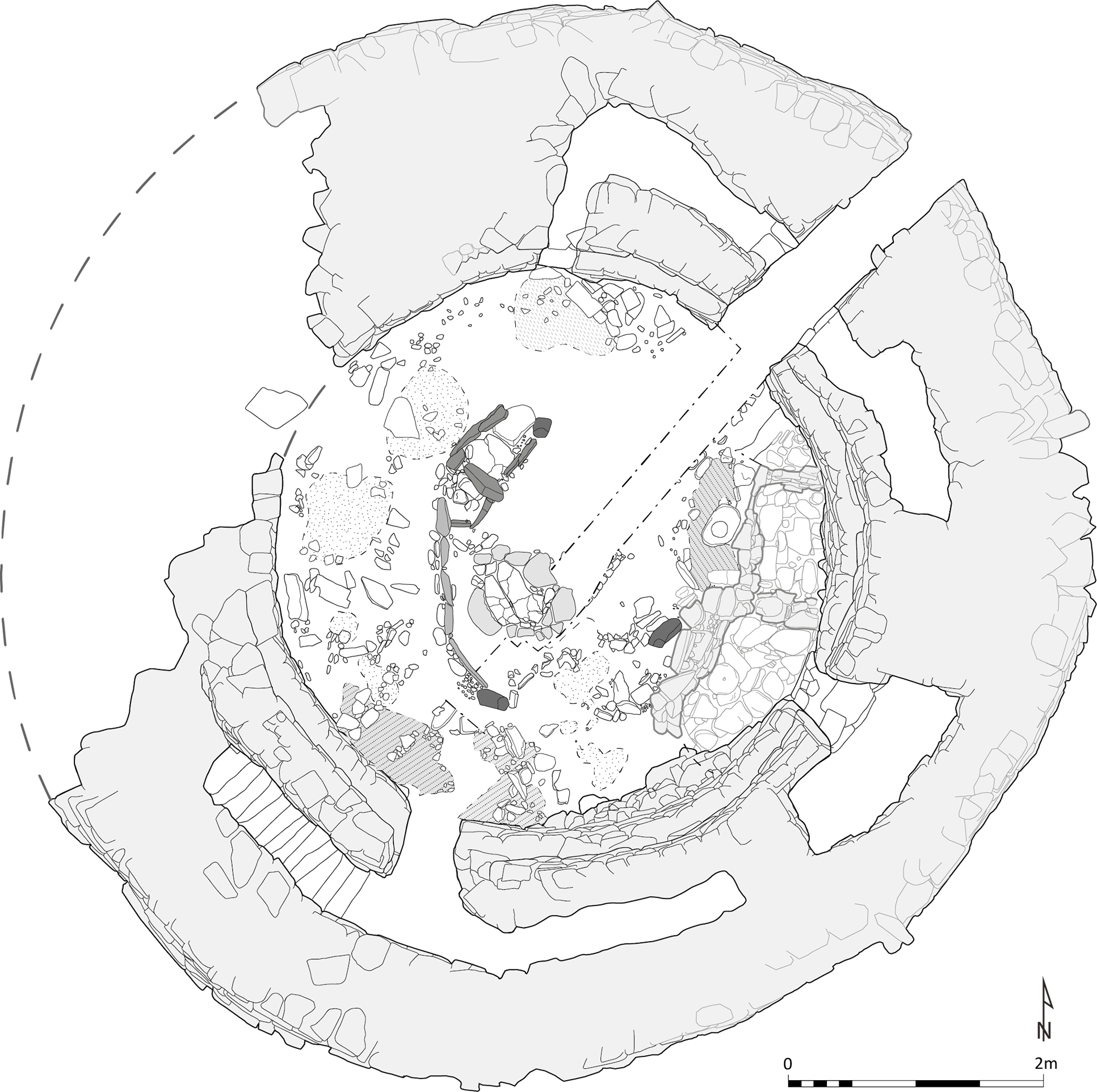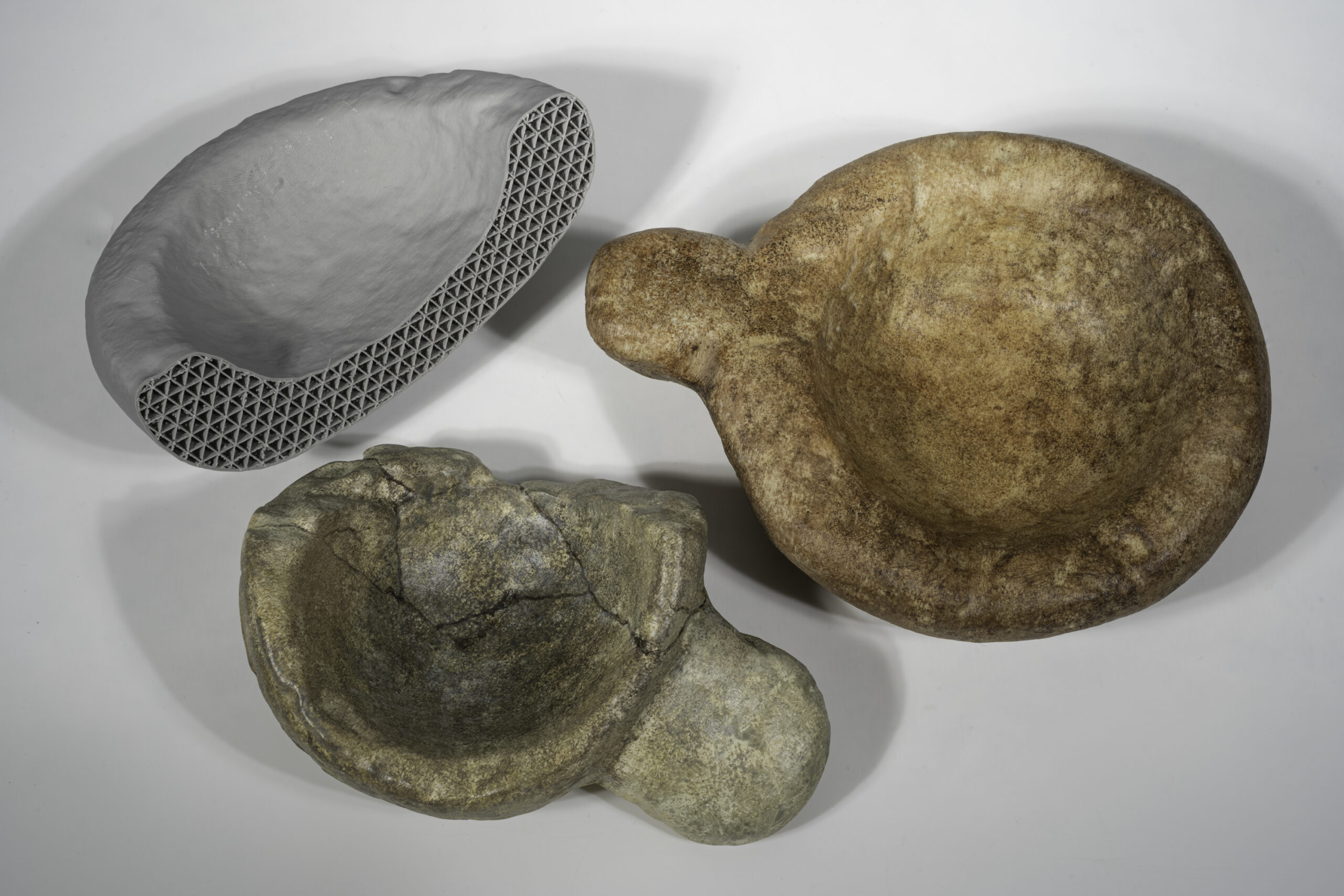A selection of objects was replicated using 3D printing technology so that they can be housed in a ranger hut close to the broch. Made of polymer composites, they are durable and can be exhibited without the need for climate-controlled conditions.
Many years of work by Historic Assynt to consolidate and conserve Clachtoll Broch led to full excavation of the site in 2017 with hundreds of artefacts retrieved during the work. The excavation at Clachtoll provided a snapshot of life in Assynt in the Iron Age.
The construction of a new ranger hut at Clachtoll Beach car park presented an opportunity to provide new information about the broch for visitors: information panels would tell the story of the broch and an exhibition window would house the excavated artefacts. The exhibition window, however, would not be climate controlled.
This meant it would not be appropriate for genuine artefacts, which would deteriorate in an environment of ever-changing light, heat and humidity. 3D printed replicas provided a solution. They look identical to the originals, but aren’t at risk of deterioration – and even if they were to deteriorate, they could be replicated again… and again, and again!
A range of objects – from pottery and stone to bone, were selected for high-resolution 3D recording. Using photogrammetry, we were able to create digital replicas of objects excavated at Clachtoll Broch.
Explore the interactive image of the broch to see the artefacts based on where they were found, or head to the bottom of the page to view the 3D gallery.














